A fleet of enormous unmanned machines is revolutionising how Oslo Airport clears snow from its runways, as Matteo Legnani reports from a wintry Norway
The sight of a large snowplough moving along taxiways and runways is impressive, but nothing out of the ordinary at a northern hub such as Oslo. Yet look a little closer and there is much more to this scene than first meets the eye.
Despite meandering between other airport vehicles and taxiing aircraft, there is no one in the driver’s cab. And it isn’t just one machine – there are as many as six of these huge autonomous ‘trucks’ moving simultaneously. This isn’t a farfetched vision of the future, but the present-day reality at Oslo Gardermoen (OSL) on any snowy winter day. The key to it all is a fleet of revolutionary RS 600 Performance Line machines, deployed in the Norwegian capital after almost a year of intensive trials.

These incredible vehicles – the world’s largest and most powerful runway sweepers – are produced by local firm Øveraasen at its Gjøvik factory, some 56 miles to the north of Gardermoen. Founded in 1908, the company has developed and manufactured snowploughs, snow blowers and runway sweepers used at airports at home and abroad for decades. Avinor, the Norwegian state-owned organisation in charge of the country’s 43 public airports, has several of Øveraasen’s products in service at OSL, including the two largest: the RS 400 and the RS 600. The former features a 27ft-wide snowplough, a 20.5ft-wide brush and a fan, with a clearing capacity of 3,848,000sq ft per hour. At a weight of 14.25 tonnes, its 435hp engine is capable of pushing it to a maximum speed of 40mph.
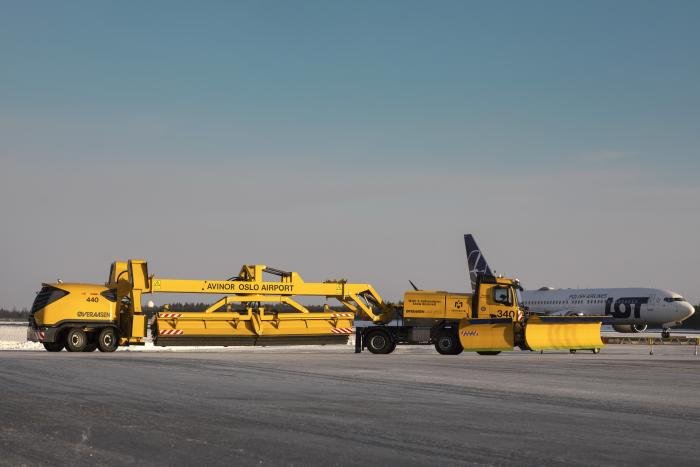
Even bigger
As if that wasn’t impressive enough, the new RS 600 goes one step further. Each of the dozen 600s features a 38ft-wide snowplough coupled with a 30ft-wide brush and a fan, resulting in an enormous surface clearing capacity of 5,253,000sq ft per hour. Put in perspective, that’s an area the equivalent of 75 football pitches. The RS 600 mounts two biodiesel-propelled Volvo engines, one in the front and one in the back, producing a total of 543hp. Electric propulsion was not deemed practical at this stage because it would require batteries which were too large and heavy.
Avinor, which invested about €8.5 million in the snow removal operation upgrade, deploys the state-of-the-art vehicles at OSL in two squads, each made of six machines, alongside with some of the older RS 400 examples. While the 400s require a driver to be operated, the RS 600s use technology that allows them to operate autonomously.
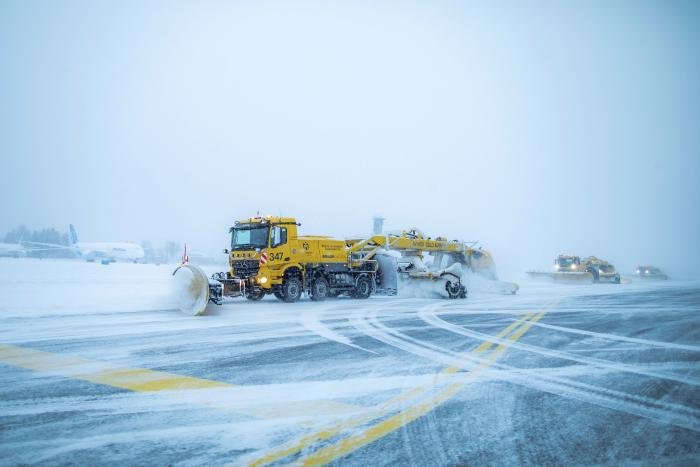
When they are not required, most notably during the warmer summer period, all of the runway sweepers are stored in a huge warehouse to the southeast of the main passenger terminal. However, when cold weather strikes, they leap into action and are controlled from a command vehicle that is also autonomous. For this, an operator can ‘design’ a mission on the airport map displayed on his or her onboard computer screen, while setting up a series of parameters including speed. These important missions can also be changed or planned remotely, with the RS 600s following its ‘orders’ exactly.
The technology is so advanced that it allows six of the machines to be deployed simultaneously along each of Gardermoen’s two parallel runways (01R/19L and 01L/19R). While one out of six machines has a safety operator onboard, all of them move and operate unmanned. The brains behind this software and IT operation, including position sensors and GPS mounted antennas, is provided by Norwegian firm Yeti Move AS.
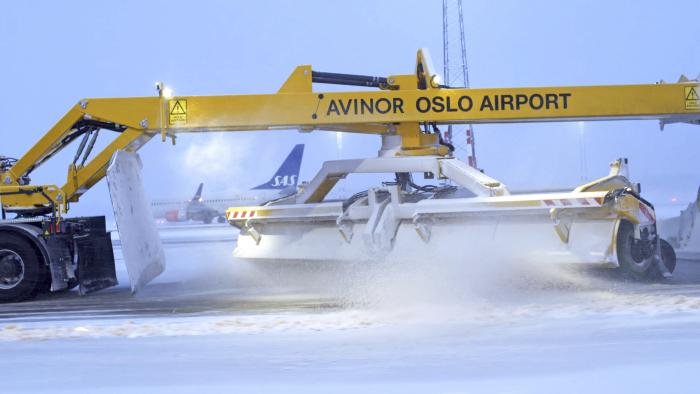
Technical revolution
The reliable performance of the machines is critical at a gateway such as Oslo, where snowfalls are commonly expected events between mid-October and mid-April. Last year, Airliner World had the privilege of seeing these machines in action while simulating a mission in preparation for the winter season and had the opportunity to speak with Vidar Snerten, senior advisor for airside operations at OSL. He helped explain how transformative the new generation of snow ploughs is for the hub: “A squad of six RS 600 is capable of clearing the longest (3,600m) of our two 45m-wide runways in less than 15 minutes. With the older RS 400s we needed as many as eight [manned] machines to get the same job done.”
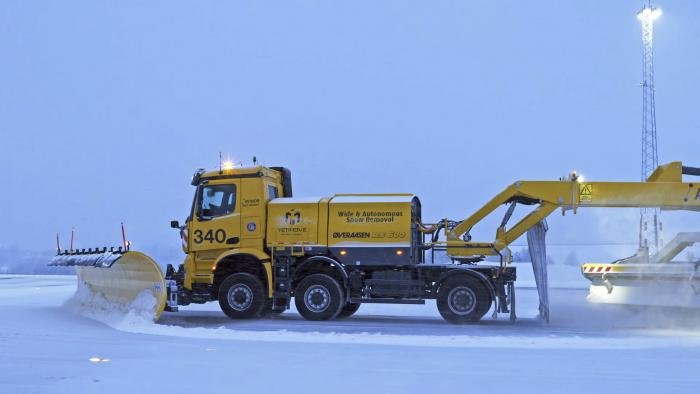
Something of a veteran at Gardermoen, Snerten started working at the site in 1991, when it was still just a sleepy little airfield handling mostly charter flights to holiday destinations to help ease the congestion at Fornebu. This all changed 25 years ago when Fornebu, which was situated close to the city but lacked the ability to expand, was closed. From October 8, 1998, all scheduled traffic was transferred to the shiny new Gardermoen.
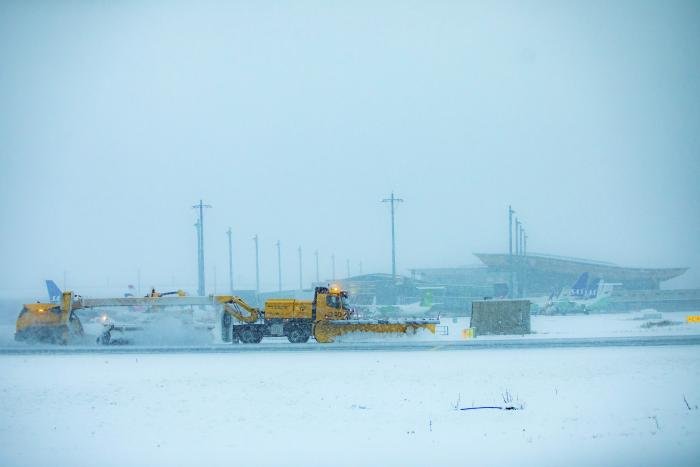
Snerten explained that, along with a new terminal, runway, taxiways and air traffic control tower, all of the supporting infrastructure received a major upgrade. This included the equipment employed to remove the snow from the airport grounds: “Since 1998, we’ve had to stop flight operations as a consequence of snowfalls no more than a couple of times, and that was only for three or four hours on each occasion.”
Snow removal is a huge operation in OSL, where the runway sweepers carry out an average of between 500 and 800 runs every year along the two runways, roughly translating to around 500-600 hours of activity annually. The weather forecast is, naturally, a key resource in the battle to keep flight operations smooth. At OSL they mainly rely on assessments from the Norwegian Meteorological Institute. Snowfalls are usually predicted with a margin of error measurable in minutes.
When the snow eventually does fall, everything is already set. “Obviously, we wait for a few millimetres to be on the ground before going into action,” said Snerten.“Then, we must co-ordinate with ATC in order to get the runway at our disposal, while informing them about the time we will need to clean and vacate it, [and] for take-offs and landings to resume in total safety.”
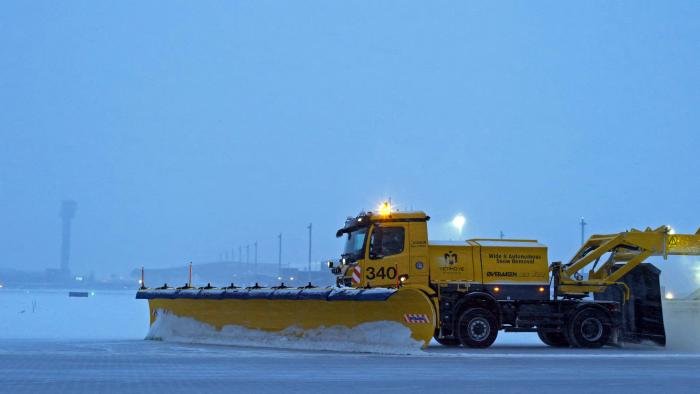
He recalled that the most demanding winter during his time at the airport was 2002-2003, when snow was removed from the runway for 80 days during the season.
Challenging conditions
Snerten also highlighted that snow is not always of the same type – something that can deeply impact operations: “Wet snow, for example, is heavier and can require more than one run along the runway. But the worst is the so-called ‘freezing rain’, a condition which happens five to ten days per season, normally during the coldest months of December and January, and requires a triple action.
“First, we employ the brush to take away ‘wet rain’, afterwards we use chemicals to melt the ice and finally we brush again. Every time they launch into action, the runway sweeping trucks are followed by a vehicle that checks the friction by means of a wheel connected to sensors. If the result is not [to their satisfaction], the operation must be repeated until we get sufficient grip for aircraft to take off and land safely.”
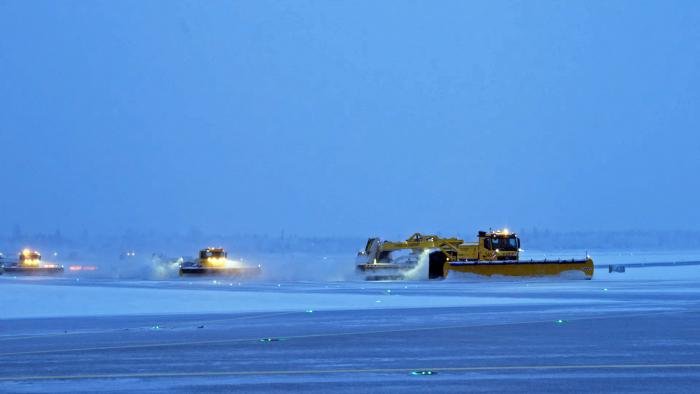
Such a huge operation requires an army of specialised personnel to be on duty during the winter months: “At the peak of the last winter season, when operations run seven days per week and 24 hours per day, we had 126 drivers involved, with 21 of them on duty in each shift. For those in charge of the larger runway sweepers, we require a driving licence for large trucks. Afterwards, they need to practice here with us before we send them around the airport. A few of them have been trialling for months on the newest autonomous machines.”
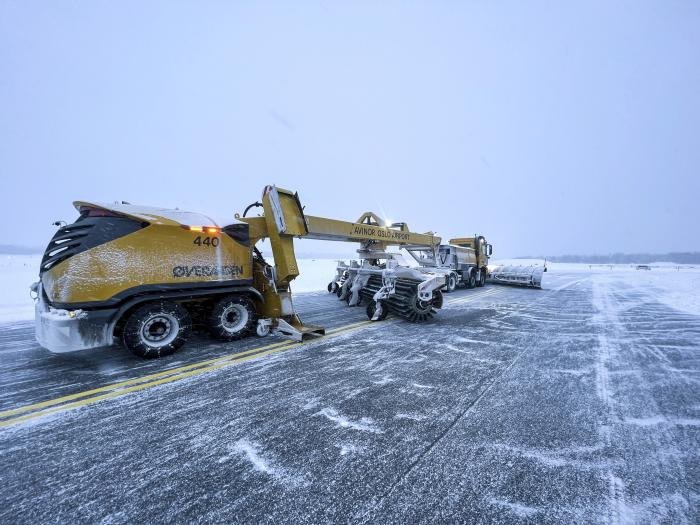
The use of these next-generation vehicles will inevitably require a lower number of drivers in the years to come, making operations less expensive and easier to manage. Avinor is already at work with its technology partners on equipment to extend, in the long term, the automation of other tasks and services across the airport estate, from grass-cutting to painting. While winter resilience is currently the top priority, the novel applications for the new technology offers a hugely exciting glimpse into the airport of tomorrow.

